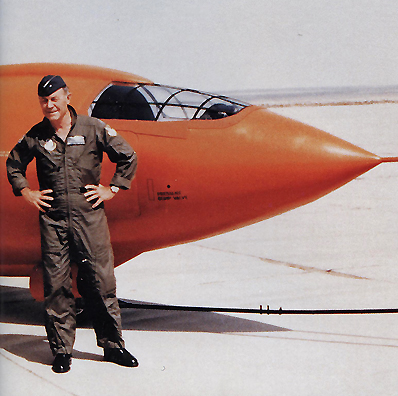
“It didn’t make any difference to me whether I thought the airplane would go faster than sound. I was assigned as a test pilot on it, and it was my duty to fly it…”
~ Chuck Yeager
“Some dang fool gave me a roadster when I was 14 and ruined my whole cotton-pickin’ life”, begins Dick Kraft on his entry into the world of California Hot Rods. “Then, I had a ‘29 Model A with Kelseys and a Winfield head that I paid for by working on the family ranches. I wasn’t getting anywhere [with the four-banger] so I bought a ‘32 roadster with side mounts and 18-inch wheels for $200. In high school, we had a car club called the Plutocrats. Every Saturday night, we would street race to hold [onto] our number-one status.” Street racing was (and is), is a part of Hot Rod History. The Legends of the Sport didn’t become heroes by collecting stamps – as kids they were racers…” ~ Dick Kraft

Dick Kraft fires his '27 T Modified ~ El Mirage Dry Lake 1948

Although The Birth of California Hot Rodding pre-dates WWII, on the Dry Lakes & on the Streets of California ~ The War actually accelerated the growth of the Sport. With the Further Development of the Ford Flathead V-8 engine – The U.S. Army ran ’em in their Tanks and the larger displacement Lincolns and Packard engines ended up in America’s PT-Boats and Fighter Planes. All sorts of bits from the California Aircraft Industry ended up in Hot Rods after the War, including the Pilots. Indeed the ‘Belly Tank’ Dry Lakes first ‘StreamLiners’ were fabricated from the auxiliary fuel tanks used by WWII Fighter planes like the Lockheed P-38, One BadAss California Hot Rod in its Own Right, but that’s Another Story…
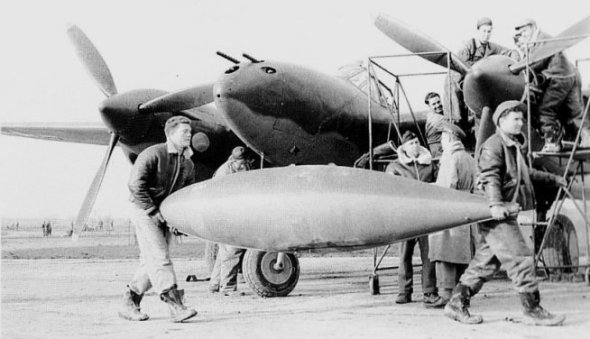
55th Air Group Ground Crew with 150 Gallon Drop Tanks at Nuthampstead, England ~ 16 November 1943
After 5 years of Hell-Bent Survival of the Fittest on Land, Sea & Air, California Boys had to find a way to Quench the Need for Speed, and California Hot Rodders took to the Air & Land in the Dry Desert Air in the Pursuit of Performance ~

The 1st 'Belly Tank' Lakester built by Bill Burke 1946 ~ Lots of WWII Surplus Gear All 'Round

California HotRodder Don Montgomery, 1948 ~ sporting a pair of WWII-style Bausch & Lomb Air Force issue shades, the 1st 'Ray-Bans'
And Indeed 65 Years Later, The Survival of the Fittest California Dry Lakes Hot Rods reached what Most Aficionados would consider the Pinnacle of Automotive High Style ~ The Hallowed Ground of the Pebble Beach Concours D’Elegance, 2010. The Iconic California Dry Lakes Roadsters And ‘Belly Tankers’ have since been restored to the Nth Degree… Far More Refined & Coveted in their Appearance than the All-Business Originals. However what Really Shines Through the Gloss, Pomp & Circumstance, The Caviar & the Champagne of the Greens of Pebble Beach is This. The California HotRodders, after enduring Years of Toil, War, Death & Destruction, came home to California to Create a Culture that was celebrated Then & Today for the Pursuit of Engineering, Design & Performance Excellence in the Thin Air Desert Dry Lakes of California ~

So-Cal Speed Shop '32 Deuce Roadster ~ Santa Ana Drags, 1950 & on the Streets of L.A., 2010
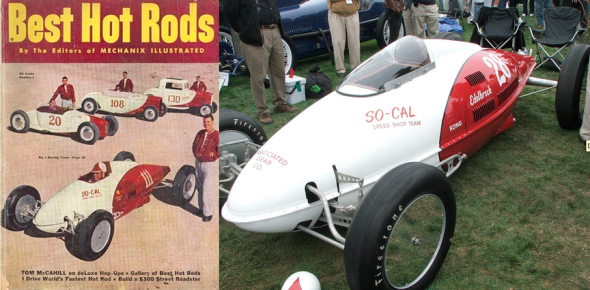
The So-Cal Speed Shop Team makes the Cover, 1950., & The So-Cal Speed Shop 'Belly-Tanker' today, Pebble Beach Concours D'Elegance 2010

The Evans Equipt '27 T-Bucket Modified Roadster ~ El Mirage 1950 & Pebble Beach Concours D'Elegance 2010

BadAss California HotRod 59AB Maxed-Out Merc Flatheads ~ State of the Art in 1950
Perhaps the Greatest Honour that can be bestowed on these California HotRods today is after years of racing, knuckle-busting, scraped together with bits leftover from Woe-Begotten World-War II Surplus by Men toiling in the California Desert Dust, Heat & Cold in the Pursuit of nothing more than Every Last Bit of Speed…Years of Neglect & Idleness, and finally these Rolling Works of Art take their place beside the Bugattis, Ferraris, Mercedes & Duesenbergs of the Classic Automotive Stratosphere, representing their Time & Place as California Art ~

The Shadoff Special/CT StreamLiner ~ World Speed Record Holder, Bonneville 1953 & Pebble Beach Concours D'Elegance 2010
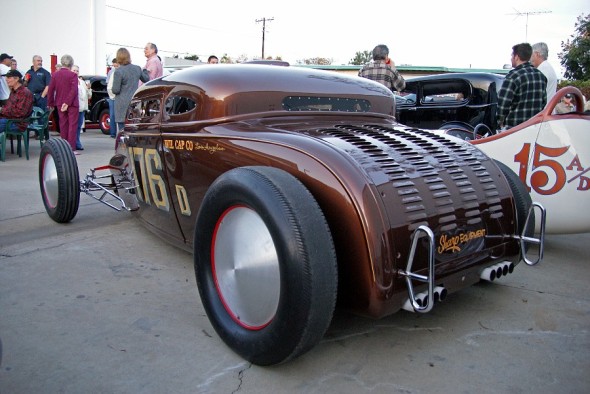
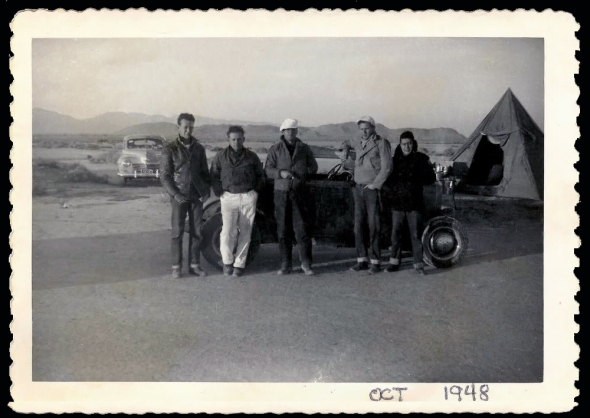

Special Thanks to Jalopy Journal.com /H.A.M.B. , Kustomrama.com, and Jimmy Bs 1925 Chev’s photostream on http://www.flickr.com for photos in the post ~
August 17, 2010 | Categories: BadAss California HotRodders ~ | Tags: Bell X-1, Belly Tank, Bonneville Speed Week, Chuck Yeager, Deuce Roadster, Dry Lakes, El Mirage, StreamLiner | 5 Comments
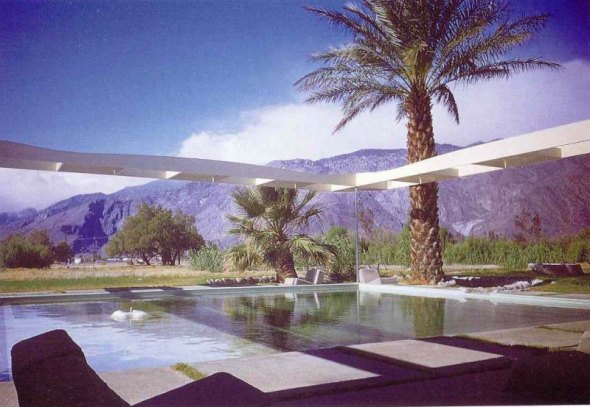
Much Like other Genres of California Pop Culture & Influence, it took several European Immigrants to the California Lifestyle to Recognize and Establish a Standard of Architecture, creating several Mid-Century Masterpieces that influence all that we know today about Modern California Design ~
At the end of World War II Palm Springs’ Lazy Sunny Slow Desert Population almost tripled, and the city experienced a building boom. As an Elite Escape for the Hollywood Gentry and a Winter Haven for East Coast industrialists, Palm Springs would emerge Post-War as a resort community for a broader segment of the American populace with more leisure time than any previous generation. This helped to attract Design Projects from around the country, along with readily available Wide Open Spaces, a Balmy Tropical Clime and existing relaxed building codes and regulations…

Albert Frey was born in Zurich and had Come Up in an era of the Dutch De Stijl Movement & German Bauhaus Schools of Thought on Design. There is a Direct Correlation in these European Design Styles that one can see today in the Iconic Mid-Century Homes & Buildings well-preserved in the Dry California Desert of Palm Springs.
Frey moved around Europe, working in Belgium for several notable Architects, then moving to work with the Master Le Corbusier. Mssr. Frey came to America to work in 1928, and indeed one can trace the Roots of California Mid-Century Modernism to this period, as Architects like Frey, Austrians Rudolph Schindler & Richard Neutra moved to the U.S., bringing Art Deco & Modernist Sensibilites to the Somewhat Staid and Rigid American Frank Lloyd Wright Prairie Design Ethic of the Day.
Photographer Edward Steichen, Film Director Josef Von Sternberg along with his Muse, actress Marlene Dietrich and her Contemporary Greta Garbo and Many Others influenced and Began to Shape California Pop Culture in Film, Photography, Graphics, Architecture, Furniture and Product Design. Albert Frey had already Created & Contributed several American Architectural Masterpieces with Le Corbusier and other leading American Architects of the Day years before setting foot in Palm Springs, or even California…


Consider That Most Americans were either Entering the Depression, going to Gangster Movies and PoP Culture centered around Bonnie & Clyde, Machine Gun Kelly and Charlie Chaplin, that Perhaps Puts the Progressive Luminaire House in Perspective as Design in 1931 ~
Designed by architects A. Lawrence Kocher and Albert Frey for the 1931 Architectural League exhibition in New York, the Aluminaire House was one of only two houses by American architects to be included in the Museum of Modern Art’s famed 1932 International Exhibition of Modern Architecture. Disassembled and rebuilt 3 times, The Aluminaire now resides On the Central Islip (Long Island) campus of the New York Institute of Technology.
 Another Altogether Influential European Designer would come to America from his Native France, having been wounded & decorated by his country while serving in WWI. His name was Raymond Loewy. He almost single-handedly changed the Face of American Product, literally creating a completely new Modern American Design Vernacular in Trains, Planes & Automobiles ~
Another Altogether Influential European Designer would come to America from his Native France, having been wounded & decorated by his country while serving in WWI. His name was Raymond Loewy. He almost single-handedly changed the Face of American Product, literally creating a completely new Modern American Design Vernacular in Trains, Planes & Automobiles ~
Monsieur Loewy, having landed in New York in his French Military Uniform with $50. in his pocket, sought work immediately in Manhattan. Much like his N.Y.C. PopArt Successor Andy Warhol, Loewy started out his Illustrious American Design Career Stateside in the 1920’s as a Window Display Designer for Department Stores, including Macy’s and Saks Fifth Avenue. He soon found work on a Higher Level as a Fashion Illustrator for the magazines Vogue & Harper’s Bazaar, as Fashion was largely illustrated rather than photographed at that time. This path very much Parallels that of Warhol some 30 years later…however that is where the Similarity of the Two Ends ~
Loewy’s Amazing Design Talent & Skills Propelled Him to the Stratosphere of Classic American Industrial & Product Design. He designed everything from The World’s First Streamlined Refrigerator, the Coldspot, to Complete Railroad Lines, Locomotives, Furniture, Graphic Design, Airliner Interiors and Automobiles ~ His Most Noteworthy Association in this realm with Studebaker. One of his Most Beautiful & Timeless Designs is this breathtaking Studebaker StarLiner Coupe from the Early Fifties, Known among Automotive Aficionados as the ‘Loewy Coupe’ ~
And So ~ at the Peak of Their Careers, Mssrs. Frey & Loewy’s Paths Converged. As Raymond Loewy was a Confirmed Bachelor at this point in his Stellar Mad Men Career, he needed a Man Cave. And who Better to Build It than the Confirmed Mid-Century Desert Design Maestro Albert Frey.
From 1935 to 1937 Albert Frey worked with John Porter Clark (1905-1991), a Cornell-educated architect, under the firm name of Van Pelt and Lind Architects as both were yet unlicensed in California. April of 1937 saw Frey briefly return to the east coast to work on the Museum of Modern Art in New York. While in New York Frey married Marion Cook, a writer he had met in Palm Springs. In 1938, Frey and his wife went to France and returned to America on the SS Normandie, a floating Art Deco Masterpiece. The couple arrived back in New York City on August 1, 1938 aboard the Great Ocean Liner.

Frey was So Enamored of Palm Springs and its Surroundings, he would soon focus all his Creative Design Energies there. He built his own home in Palm Springs in 1941, starting with a 3-bedroom nucleus that he hoped could be a prototype for mass-produced homes. Built out of very low-cost industrial materials, it came in at $6 per square foot, low even then. An original proponent of multiple-use space, his dining room table hung from the ceiling on clotheslines, The Iconic architectural Photographer Julius Shulman wrote about the Frey House,
“The aluminum siding and ceiling reflected the sun, while the interior wood panelling provided a feeling of warm refinement”

To see more of Julius Shulman’s Palm Springs Architectural Photography have a look at Modernism Rediscovered; pictures by Julius Shulman from::Palm Springs Modern Committee .
Frey’s Building Technique would soon Become the Mid-Century Southern California Style Vernacular~
Architects & Builders all over Southern California would Adopt Frey’s Design & Building Style, capitalizing on readily available materials that emerged from the Mass Industrialization of America & the Southern California Aircraft Industry during WWII. FiberGlas, Aluminum & Plywood established the Signature Look ~
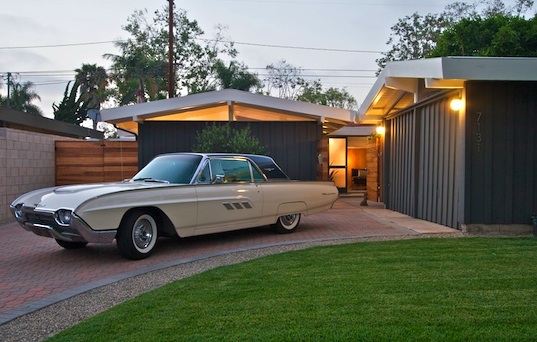

Architects like Cliff May & Roy Fey would Capitalize on this PostWar Building Boom,

adopting Frey’s Le Corbusier ethic and applying it Everywhere a Tract House Could Live in California. Neighborhoods from Larkspur to Lakewood sprang up and with all those G.I’s returning from Axis Battle with their G.I. Bills, Times were Good in Sunny California ~
One Big Drawback of these Low-Cost Innovations by the Bauhaus Master Frey was that Anyone could Get in on The Act, often with Questionable Results, and the California Tract House Was Born ~

 But Not to Worry, as the Absolute Masters shared & adopted Frey’s Culture as well, and shared & adopted Frey’s Culture as well, and California Masterpieces arose… the Most Iconic Example is easily the Kaufmann House in Palm Springs by Richard Neutra. To look upon this house today One sees the Intuitive Skill in which Neutra Adopted Man’s Need for Shelter with the Surrounding Natural Setting as One ~
But Not to Worry, as the Absolute Masters shared & adopted Frey’s Culture as well, and shared & adopted Frey’s Culture as well, and California Masterpieces arose… the Most Iconic Example is easily the Kaufmann House in Palm Springs by Richard Neutra. To look upon this house today One sees the Intuitive Skill in which Neutra Adopted Man’s Need for Shelter with the Surrounding Natural Setting as One ~
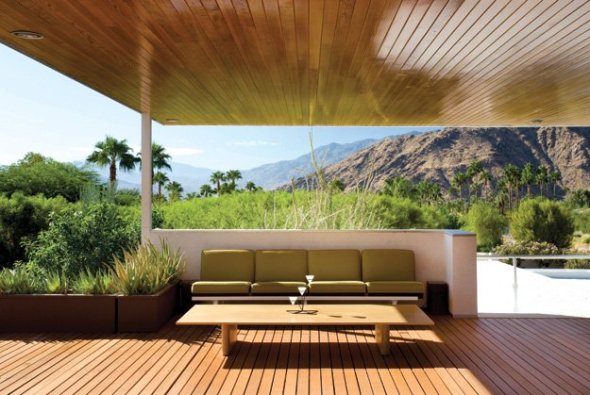
The Kaufmann House - a 1946 masterwork by architect Richard Neutra
The much-photographed 1946 masterwork by architect Richard Neutra might be the complete marriage of the abstract geometry of modern architecture with the desert-and-mountain landscape of Palm Springs. The sleek, largely horizontal, 3,162-square-foot house — on 2.53 acres, and including five bedrooms and six bathrooms — is laid out with pinwheel-like wings, offset by a few vertical elements — a chimney and an outdoor sleeping area that Neutra called a “gloriette” — that pull together the sprawling composition.
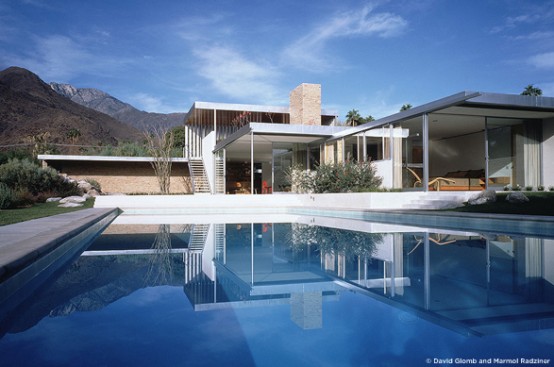
Many critics place the house amongst the most important houses of the 20th century in the United States and even was included in a list of all time top 10 houses in Los Angeles in December 2008.
And while the Upscale Master Neutra was Doing the Big-Time Mid-Century Masterpieces in the Desert ~ The Pioneer of the Genre, Albert Frey worked on a Smaller Scale with regard to Residential Design. Concentrating on his Ethic of Economy and Cost-Effective Materials, Frey Designed & Built an Addition to his Frey House I, in 1946.
Rising Out of the Rugged Palm Springs Landscape ~ Frey’s Iconic Extraterrestrial Turret appeared as from An Erector Set on Steroids ~

One can note the Most Basic of Hardware-Store Materials Frey conceived in a Most Iconic Manner
To see Frey’s own houses today perched in a Rugged Palm Canyon, is Almost Surreal. So Famous is the UFO-like Profile of Frey’s Home, it’s hard to Distinguish the Reality of your Gaze from one of Julius Shulman’s Timeless photographs.

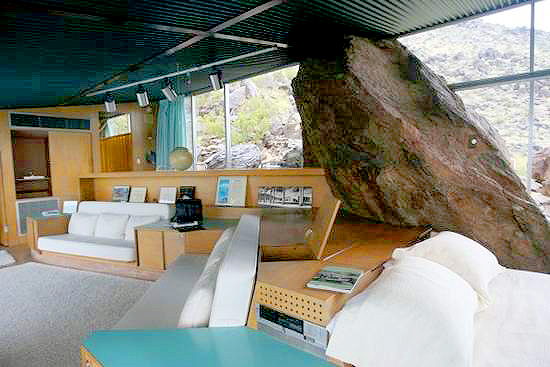
As Frey’s Direct Bold Style Took Hold in the desert, Commercial Commissions in the Community presented themselves, and Indeed stand today as Testaments to Albert Frey’s Design Genius & the Simplicity in which he Preferred to Live, Embracing the Desert Surroundings ~
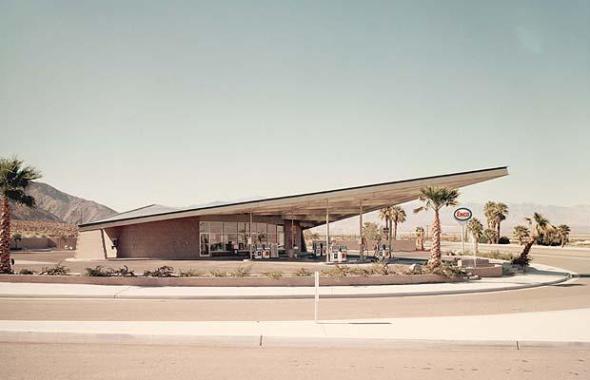
George & Judy Jetson got Married at the Palm Springs City Hall, 1957 (below) & Filled Up at the TramWay Gas Station, 1963 ~ Albert Frey
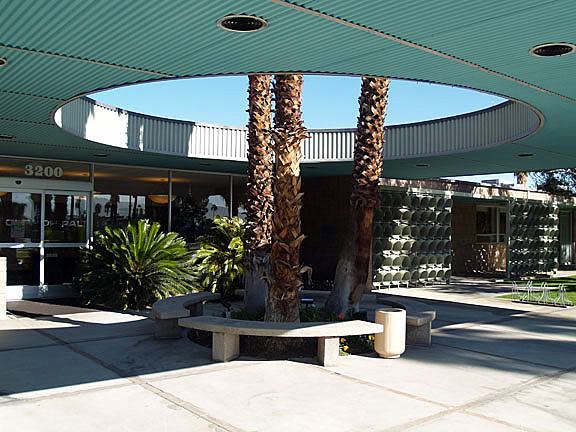
And Almost as a Parallel ~ The Bachelor Designer Raymond Loewy’s career had drawn him to Palm Springs in the Forties. So What Better Architect than Frey to collaborate with Loewy for the Ultimate Mad Men Man Cave ?
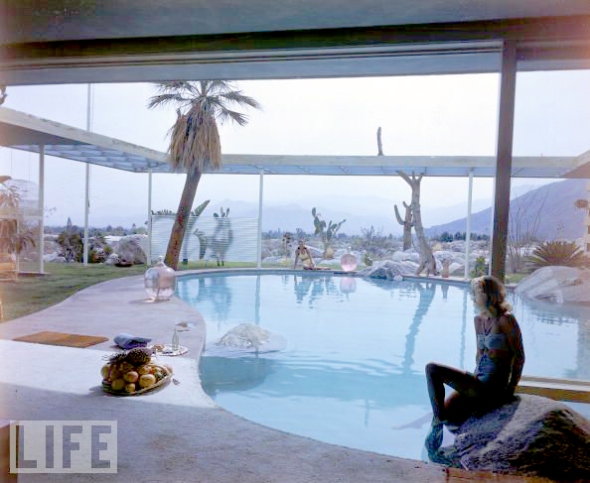
Raymond Loewy's Ultimate Man Cave & The Trappings of Bachelor Success ~ Albert Frey, 1946
Built in 1946-47 as a bachelor retreat and expanded later when Loewy got married, the house today has been restored by metalware manufacturer Jim Gaudineer who said of the design, “When you slide open the glass walls, it’s almost like living outdoors.” A typical Palm Springs modernist villa with a low-slung pavilion and plenty of glass that provides striking views of desert, mountains, and the pool and garden that make the private oasis complete…

What makes the Loewy House so Attractive is its Intimacy and like all of Frey’s Designs, its Simplicity. The Pool that literally Floats into the house…How Very Dean Martin of you Raymond. And indeed with Julius Shulman’s amazing Black & White photographs of the Loewy House, along with so many of Frey’s designs, it became an Immediate California Design Icon, like Frey Himself ~

For some years in the Late 40’s and 50’s Loewy settled down to a Life of Designer Domesticity
 enjoying the Fruits of his Labors…and indeed in so many pictures of his Life, he is Surrounded by Beautiful Women, Admiring Friends & Co-Workers…No Shrinking Violet, Mr. Loewy ~ The Desert Design MasterMind Working on his Tan…and during that period Loewy continued his association with Studebaker, designing a Succession of Styles for them that would ensure Studebaker’s, and Loewy’s place in Time, literally…
enjoying the Fruits of his Labors…and indeed in so many pictures of his Life, he is Surrounded by Beautiful Women, Admiring Friends & Co-Workers…No Shrinking Violet, Mr. Loewy ~ The Desert Design MasterMind Working on his Tan…and during that period Loewy continued his association with Studebaker, designing a Succession of Styles for them that would ensure Studebaker’s, and Loewy’s place in Time, literally…
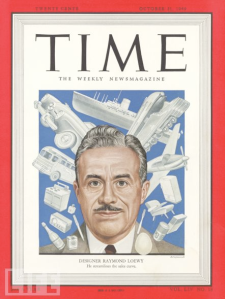
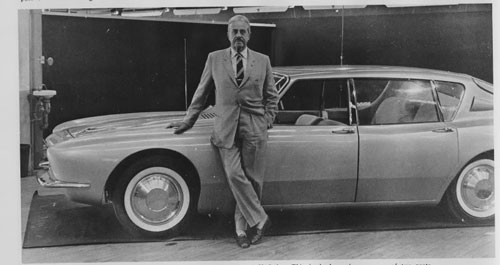
Loewy with a Final Prototype Avanti - A 4-door never produced~looking some 50 years previous a lot like the 2010 Porsche Panamera
Loewy’s continued success and Endless Restless Design Genius would lead him to what many feel is his Swan Song ~ A Studebaker that, in spite of the Impending Doom of a company Loewy’s Designs had propped up for years – His Finest Hour would come with The Last Effort of a very old American Car Company to stay alive …
The Studebaker Avanti ~

A Final Avanti rendering virtually identical to the 1963 ~ preceding Mustang, Camaro, et al
Loewy in Later Years would divorce his Wife, and like Many Maniacal Mad Men, would soon Marry a Woman Half his Age ~
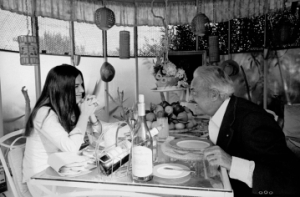 While his business earned roughly $3 million a year for decades, Loewy was able to indulge a sybaritic life‑style. In addition to a series of enormous yachts, Loewy at his peripatetic peak maintained lavish residences on Long Island and the Riviera, a pied‑a‑terre in Paris and a château in the suburbs, a Fifth Avenue cooperative, a villa in Mexico and of course the Frey House Palm Springs, Calif. “Of course, we have very little of all that left,” said his wife Viola.
While his business earned roughly $3 million a year for decades, Loewy was able to indulge a sybaritic life‑style. In addition to a series of enormous yachts, Loewy at his peripatetic peak maintained lavish residences on Long Island and the Riviera, a pied‑a‑terre in Paris and a château in the suburbs, a Fifth Avenue cooperative, a villa in Mexico and of course the Frey House Palm Springs, Calif. “Of course, we have very little of all that left,” said his wife Viola.
And What of Frey Himself ? Perhaps the New York Times said it best in 1998 ~
Albert Frey, a Modernist and Minimalist Architect, Dies at 95
Albert Frey, an early ambassador to America of the International Style of architecture who later brought its themes to buildings in harmony with the American desert, died on Nov. 14 at his home in Palm Springs, Calif., his executor, F. Gillar Boyd Jr., said.
He was 95 years old.

Mr. Frey belonged to a generation that believed in a political role for modern architecture, that of social liberation through machine-made, egalitarian and affordable designs. His chosen materials were aluminum, glass, cables and, eventually, the very boulders and sands of the desert where he settled.
In a career that spanned more than 65 years, Mr. Frey remained true to the principle that architecture should make the most of the least. His best known works were the East Coast houses he designed with Lawrence Kocher in the 1930’s and the many buildings he created in the Palm Springs of the 1940’s, 50’s and 60’s.
”He was the last of a generation of European architects that came to the West Coast envisioning that, in this unformed landscape, a perfected vision of a modern future could bloom,” said Terence Riley, chief curator of architecture and design at the Museum of Modern Art.
And Mr. Loewy ? He Lived to Be 97, until 1986 ~

During his lifetime Loewy’s company worked for numerous private companies as well as governments, and his designs have had a major effect on the Man-Made Environment. Products he has been responsible for range from cars, ships, airplanes, buildings and white-goods appliances
to products such as toothbrushes and pens.

Mssr. Loewy served as consultant to numerous corporations including The Hupp Motor company, Coca- Cola, United Airlines, Shell, Exxon, IBM, BMW, GM and NASA sought him for his streamlined designs seen to reflect economy and grace. Loewy was a Consultant to NASA on the Apollo Space Program, and on the Saturn I, Saturn V, and the SkyLab Habitat studies, 1967-1973.
That is a Long Way from Designing 1930’s Refrigerators~ And Along Somewhere, in Between All of Those Accolades, The Two of Them were Just Two Young Brilliant Guys, Admiring Each Others’ Work, Creating a New California Style, Some Sensible Living Spaces & Making Friends ~

![biltmore-palm-springs-postcard[1]](https://federicodecalifornia.files.wordpress.com/2010/08/biltmore-palm-springs-postcard1.jpg?w=590)
August 11, 2010 | Categories: California Icons ~ | Tags: Albert Frey, Cliff May, Julius Shulman, Mid-Century Architecture, Palm Springs, Raymond Loewy, Roy Fey, Studebaker Avanti | 7 Comments















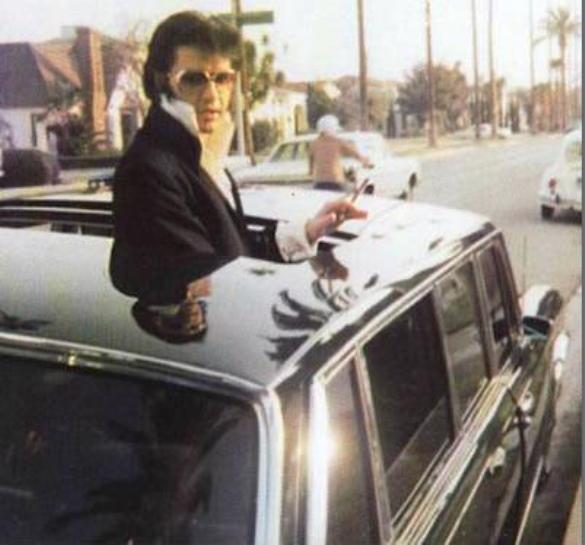
























 enjoying the Fruits of his Labors…and indeed in so many pictures of his Life, he is Surrounded by Beautiful Women, Admiring Friends & Co-Workers…No Shrinking Violet, Mr. Loewy ~ The Desert Design MasterMind Working on his Tan…and during that period Loewy continued his association with Studebaker, designing a Succession of Styles for them that would ensure Studebaker’s, and Loewy’s place in Time, literally…
enjoying the Fruits of his Labors…and indeed in so many pictures of his Life, he is Surrounded by Beautiful Women, Admiring Friends & Co-Workers…No Shrinking Violet, Mr. Loewy ~ The Desert Design MasterMind Working on his Tan…and during that period Loewy continued his association with Studebaker, designing a Succession of Styles for them that would ensure Studebaker’s, and Loewy’s place in Time, literally…






![biltmore-palm-springs-postcard[1]](https://federicodecalifornia.files.wordpress.com/2010/08/biltmore-palm-springs-postcard1.jpg?w=590)